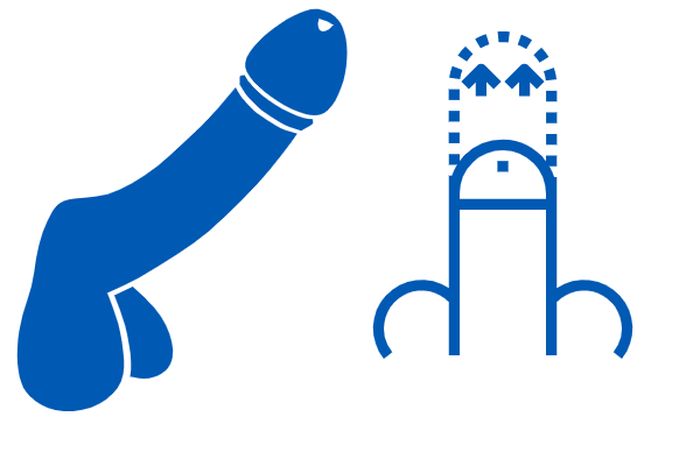One testicle larger than the other. How do you know if it's normal?
Men often wonder if they have a problem with their testicles when they discover that one is hanging lower than the other, or that one is actually bigger than the other.

If many men wonder if it's normal to have one testicle larger than the other, it's because it's common. So yes, this is normal, most of the time.
Do all men have one testicle larger than the other?
Most yes! In general, the right testicle tends to be larger than the left, and usually one of the two is lower than the other in the scrotum.
At first, this is not a problem. You just need to make sure you never feel pain or other discomfort.
Even if a difference in size is normal, still, the shape should not be totally different. Therefore, if you suddenly feel pain or the shape is not the same, it is better to consult a doctor.
How do I find out if I have one testicle that is bigger than the other?

Just look at your testicles. The difference, if observed, should be minimal and one cannot be disproportionate to the other.
You should never feel pain while sitting or playing sports, for example. Redness or swelling should never be observed. In this case, it could be testicular torsion or epididymitis.
The testes are egg-shaped rather than round. They should be smooth, with no bulges, with the exception of the epididymis and ducts which are not smooth. But if you feel any bulge in your testicle, see a doctor right away.
How to examine the testicles?
A self-exam is very easy to do and is the first step in identifying a problem.
Follow these steps when the scrotum (the pouch that holds the testicles) is loose and not shrunk.
- Roll and lightly pinch one testicle between your thumb and forefinger. Don't do it too forcefully, of course;
- Run your fingers over the entire surface of the testicle, try to see if you feel any pain, small bumps, pimples, etc.;
- Touch the epididymis, that set of tubes that starts at the top, at the back of the testicle, and goes down;
- Do the same with the other testicle.
It is recommended that you do this self-exam at least once a month.
Why is one testicle bigger than the other?
In reality, there is no scientific explanation for this question. However, there are medical causes for one testicle to be larger than the other. We are talking about cases where one of the testicles is painful or the difference in size has increased abnormally.
Possible causes of an enlarged testicle are:
epididymitis
It is inflammation of the epididymis. This swelling of the tube that carries sperm is often one of the symptoms of an STD (Sexually Transmitted Disease), such as chlamydia or gonorrhea. This results in abdominal pain, pain when urinating, and inflammation of the scrotum.
cyst in the epididymis
In this case, it is simply the epididymis that swells with excess fluid. This usually does not require treatment.
orchitis
Orchitis is an inflammation of the testicles caused by viral infections such as mumps. It is important to see a doctor because orchitis can damage the testicles and cause infertility.
Symptoms of orchitis can manifest after 7 days of contamination. The main symptoms are: pain and swelling in the testicles; bloody urine or ejaculation; testicular sweating; feeling of heaviness in the region.
hydrocele
A hydrocele is a buildup of fluid around the testicle inside the scrotum, causing swelling. It is more common with age and does not require treatment. However, care should be taken as hydrocele can also present with inflammation.
varicocele
Varicoceles are abnormally dilated, thick, bulging veins in the scrotum above the testicles. They can eventually reduce sperm production.
testicular torsion
Torsion of the spermatic cord, which can become tangled, occurs if the testicles move too much. This reduces blood flow to the testicles and can be harmful. The pain that accompanies the torsion is sharp and may disappear before the testicle returns to normal. This is an incident that must be dealt with urgently.
testicular cancer
Testicular cancer starts when cancer cells appear in the testicle. Seek medical attention immediately if you notice any small bulges on the surface of the testicle.



















